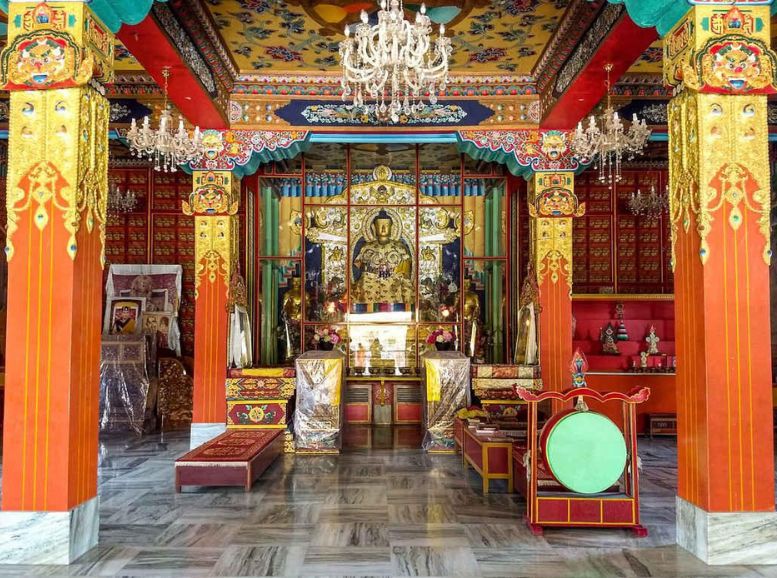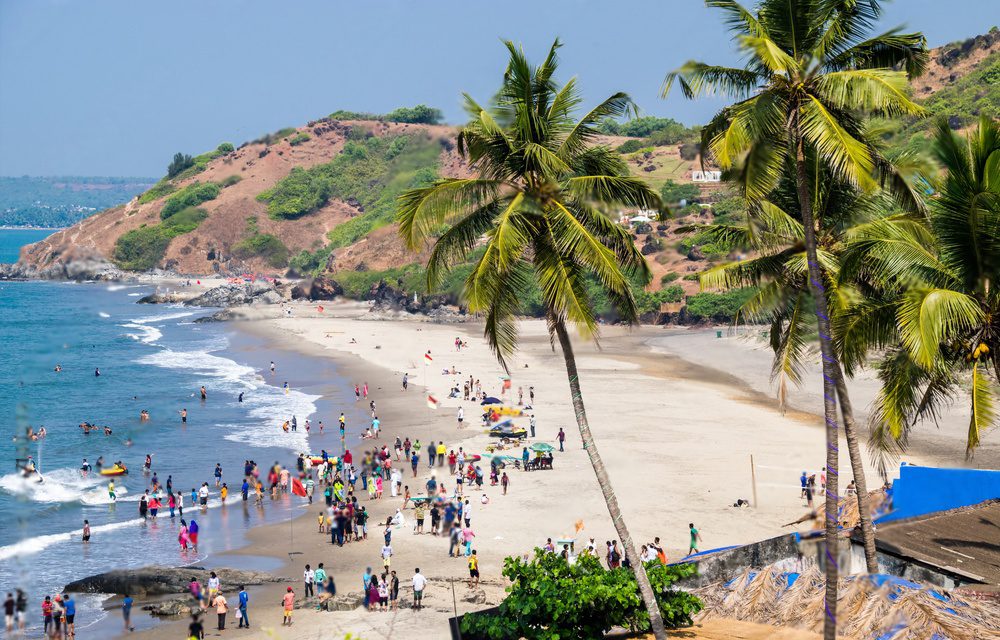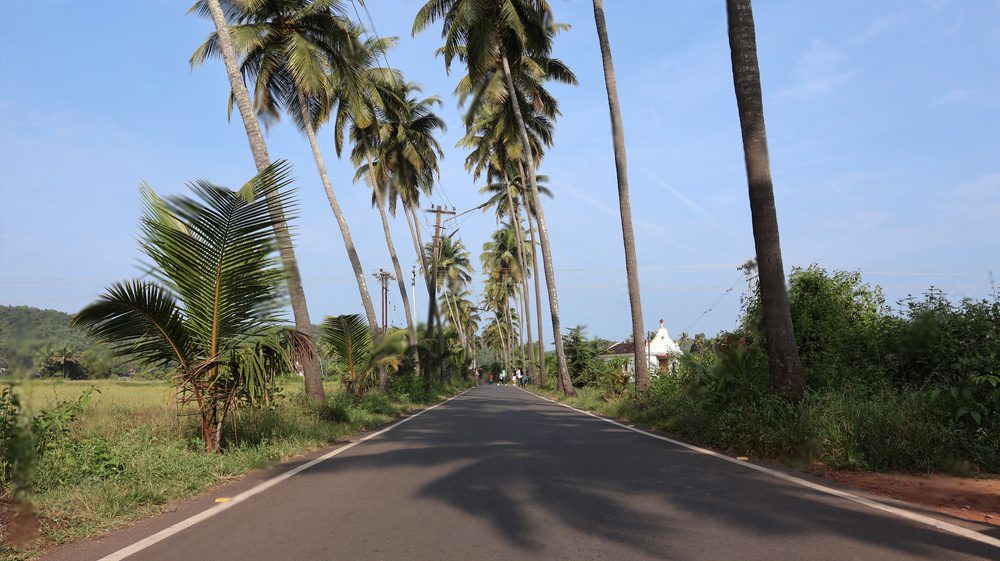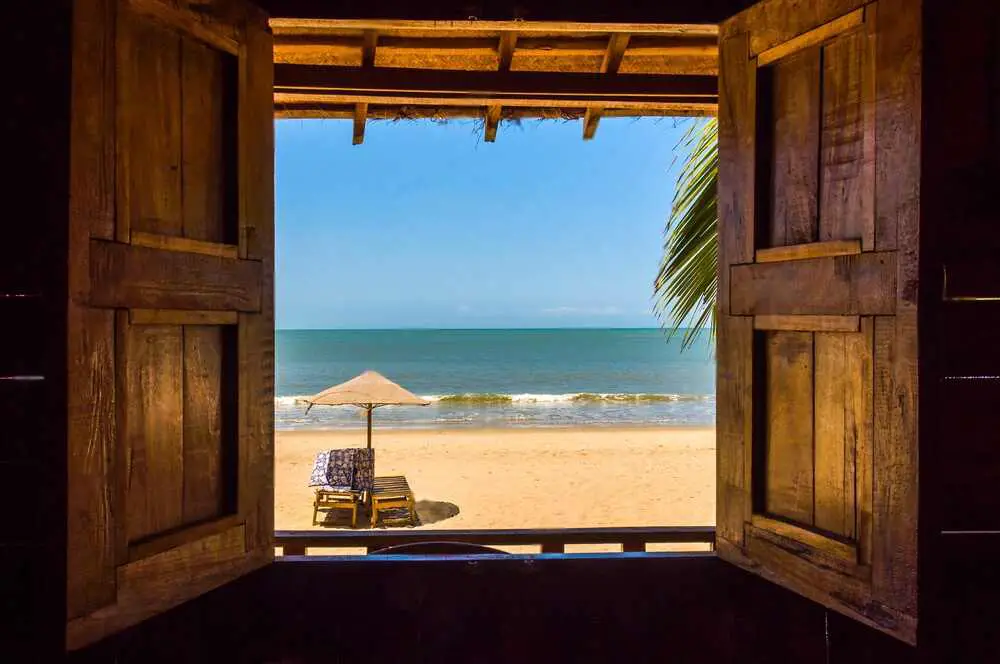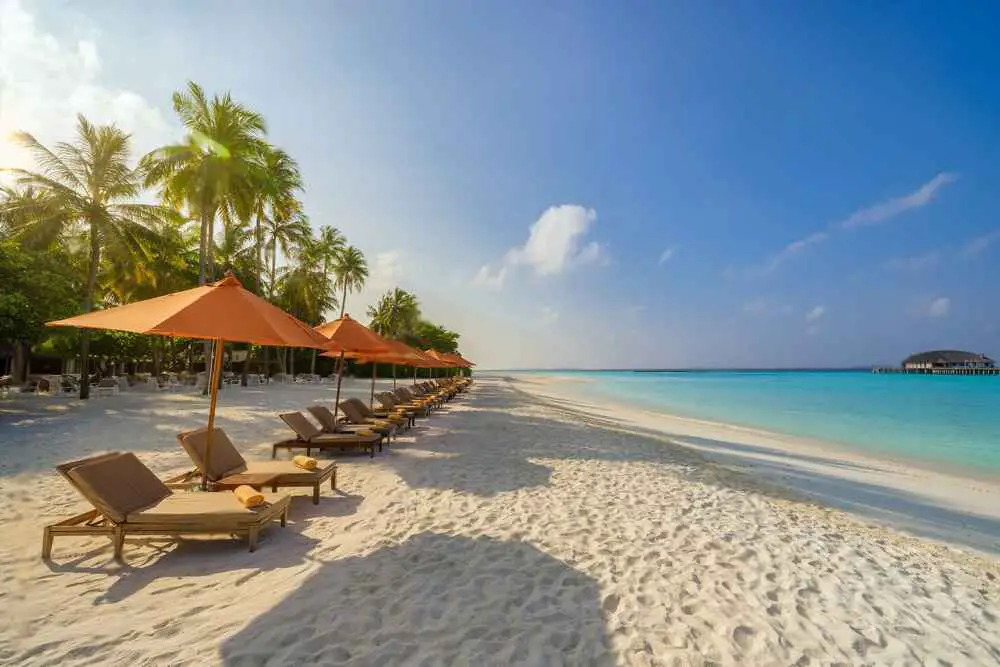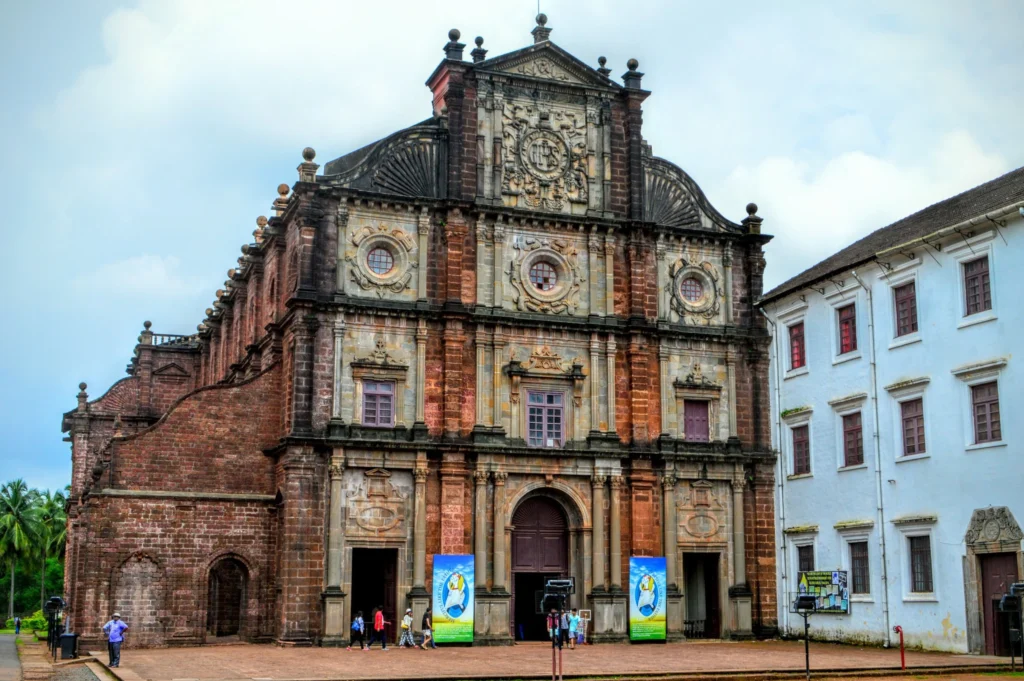Unveil the history, spirituality, and serenity of Bodh Gaya, India, at the Mahabodhi Temple. For over two thousand years, this pilgrimage site in Bihar has beckoned Buddhist travelers.
Seekers come here for solace, inspiration, and a deeper understanding of the Buddha’s teachings. It was here, under the Bodhi tree, that Prince Siddhartha attained enlightenment over 2,500 years ago, a pivotal moment in Buddhist philosophy.
How to reach:
- Air: The closest airport is Gaya Airport, about 12 kilometers away. It has flights from various locations in India and abroad. Taxis or pre-paid taxis are available to reach Mahabodhi Temple.
- Train: Gaya Junction is the nearest major train station, with connections to many Indian cities. Taxis, auto-rickshaws, or buses can take you from the station to Mahabodhi Temple (approximately 16 kilometers).
- Road: Bodh Gaya has a good road network. State-run and private buses, taxis, or self-drive cars can bring you here. The town is roughly 100 kilometers from Patna, the capital of Bihar.
Getting Around Bodh Gaya:
- Local Transport: Auto-rickshaws and cycle-rickshaws are convenient for short trips within the town. Taxis can be hired for sightseeing or exploring nearby attractions. Many visitors choose to walk to Mahabodhi Temple, enjoying the atmosphere of the town.
Best time to visit:
Winter (October to February): Enjoy comfortable weather for exploring temples and sightseeing with daytime temperatures ranging from 15°C to 25°C (59°F to 77°F). Evenings can be cool, so pack some sweaters.
Spring (March to April): Pleasant weather with warmer days, ranging from 25°C to 35°C (77°F to 95°F). Afternoons can get hot, so bring sun protection.
Monsoon (July to September): Moderate to heavy rainfall creates a lush green landscape. Sightseeing can be trickier due to rain. If you don’t mind the showers and want to see a vibrant Bodh Gaya, this could be a good time to visit.
Summer (May to June): The hottest time to visit, with temperatures exceeding 35°C (95°F). Outdoor activities are less comfortable during this time. Consider visiting another season if you don’t tolerate intense heat well.
Attractions:
Mahabodhi Temple Complex:
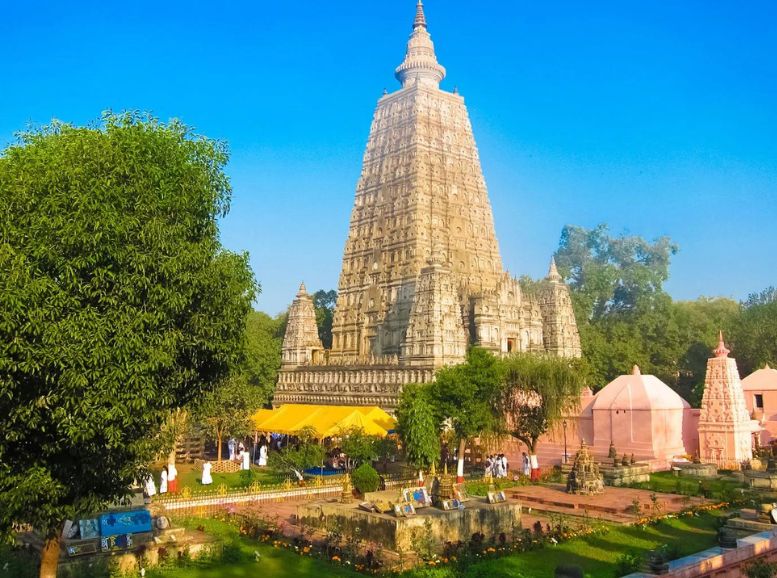

A UNESCO World Heritage Site, the Mahabodhi Temple Complex is a place of immense spiritual significance. It’s where Siddhartha Gautama, the founder of Buddhism, is said to have achieved enlightenment.
The centerpiece is the awe-inspiring Mahabodhi Temple, dating back to the 5th century AD. Its facade is decorated with intricate carvings, and a towering spire dominates the skyline. Inside, a peaceful atmosphere prevails, creating a perfect space for contemplation.
Surrounding the temple are numerous structures, each with a unique history. The ancient Bodhi tree, where the Buddha is said to have found enlightenment, is a particularly important site. The Vajrasana, or Diamond Throne, marks the exact spot where this event is said to have happened. Other structures like the Animesh Lochana Chaitya, Ratnachankrama, stupas, and shrines add to the richness of the complex.
Bodhi Tree:
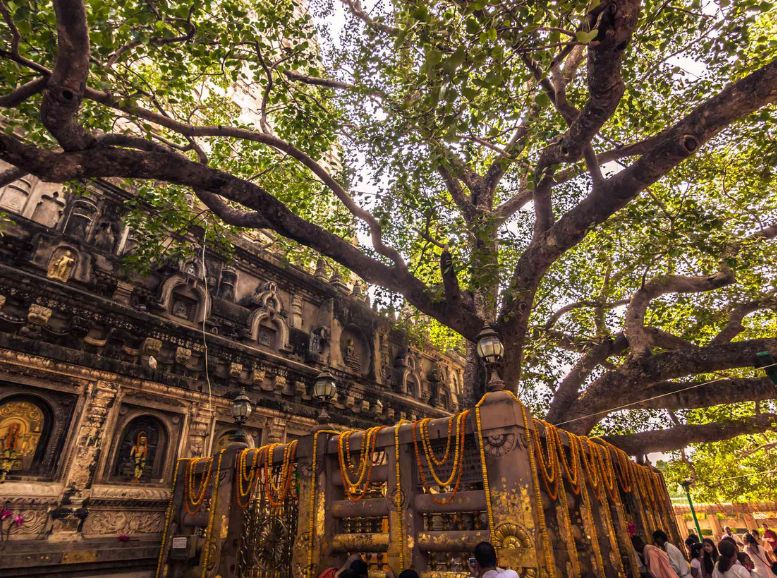

Within the Mahabodhi Temple Complex stands the sacred Bodhi tree. Believed to be a descendant of the original tree under which the Buddha achieved enlightenment, it holds immense significance for many visitors. People come from all over the world to experience the tranquility of the tree. Some offer prayers, some walk in a ritual circle around its base, and others meditate in its shade. The Bodhi tree serves as a powerful symbol, connecting visitors to the Buddha’s journey.
Great Buddha Statue:
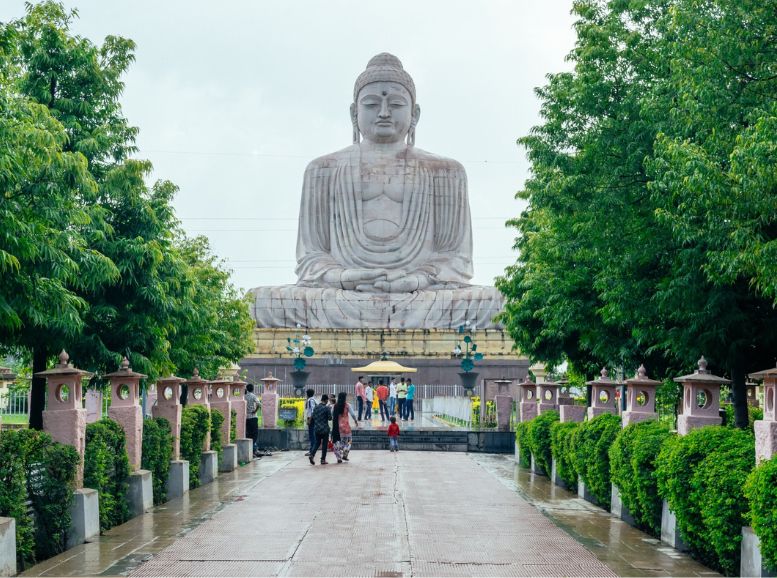

Right next to the Mahabodhi Temple, you’ll find the impressive Great Buddha Statue. Carved from red sandstone, this enormous statue portrays the Buddha in a meditative pose. The statue’s calm face and graceful posture create a sense of peace. Together with the temple complex, the Great Buddha Statue serves as a powerful symbol of the Buddha’s teachings of peace and compassion.
Animesh Lochana Chaitya:
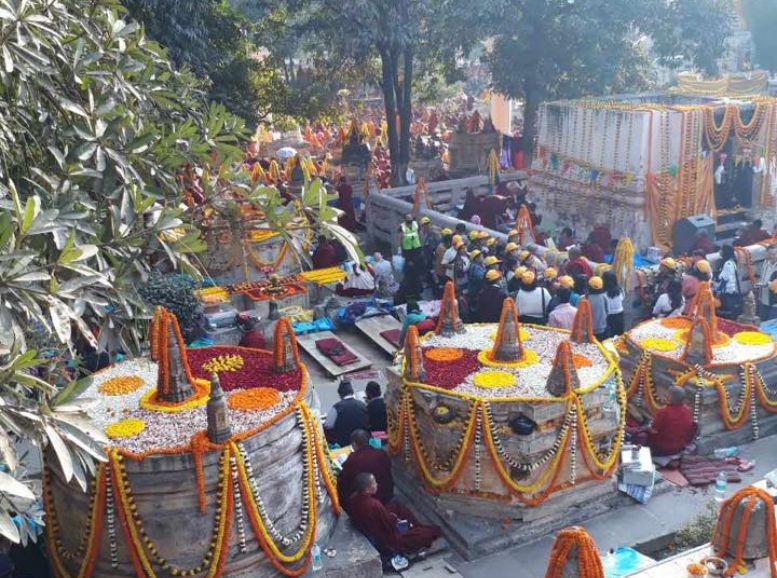

Nestled within the calming Mahabodhi Temple complex is Animesh Lochana Chaitya. This spot is significant for Buddhists. Tradition says that after enlightenment, the Buddha spent seven weeks meditating here, focusing on the Bodhi tree. Visitors come to this place to learn about the Buddha’s practices and experience the peaceful atmosphere.
Bodhgaya Archaeological Museum:
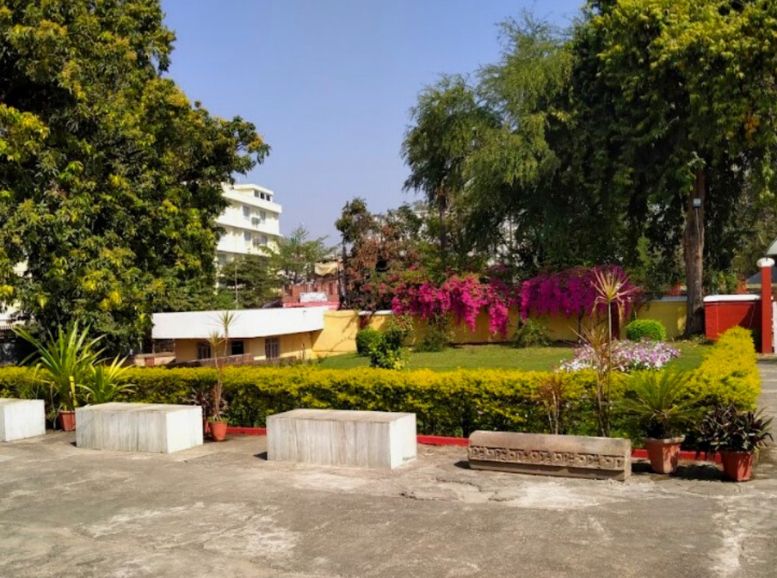

Want to learn more about Bodh Gaya’s long history and unique culture? Check out the Bodhgaya Archaeological Museum. This modern building houses a big collection of artifacts, statues, and relics. Some of these items are incredibly old, dating back to the Mauryan and Gupta empires! From beautifully carved stone figures to ancient writings and things found during digs, the museum offers a window into how Buddhism developed and the lasting impact it’s had on Bodh Gaya.
Local Experiences:
- Morning Meditation: Start your day with guided meditation sessions to experience the peaceful atmosphere of Bodh Gaya.
- Dharma Talks: Attend discussions on Buddhist philosophy and teachings led by knowledgeable speakers.
- Temple Rituals: Participate in traditional practices like circumambulating the Bodhi tree or offering prayers alongside pilgrims.
- Local Markets: Discover unique handicrafts, souvenirs, and delicious local food at bustling markets.
- Volunteer Activities: Give back to the community by volunteering with local organizations or at monasteries and temples.
- Cooking Class: Learn to prepare traditional dishes using fresh ingredients and enjoy a home-cooked meal.
- Cultural Events: Immerse yourself in the rich cultural heritage of Bodh Gaya by joining festivals and celebrations throughout the year.
- Bicycle Tour: Explore the scenic countryside on a guided bicycle tour, stopping at ancient temples and interacting with locals.
- Homestay Experience: Stay with a local family for a unique cultural experience and create lasting memories.
Travel tips:
Respect the Culture:
- Dress modestly when visiting religious sites.
- Remove shoes before entering temples and monasteries.
- Be mindful of photography restrictions in certain areas.
Stay Safe and Healthy:
- Drink plenty of water, especially in hot weather.
- Wear sunscreen, sunglasses, and a hat for sun protection.
- Be aware of monkeys and keep your belongings secure.
- Watch your step on uneven terrain and wear sturdy shoes.
- Keep your valuables safe in crowded areas.
Stay Connected and Informed:
- Consider getting a local SIM card or portable Wi-Fi device.
- Let your travel companions know your whereabouts, especially in remote areas.
Be a Responsible Traveler:
- Dispose of waste responsibly and avoid single-use plastics.
- Respect the environment and participate in local clean-up efforts.
Planning Your Trip:
- Book your accommodation in advance, especially during peak seasons.
Embrace the Journey:
- Come with an open mind and heart.
- Take time to reflect and connect with the peaceful atmosphere.
Conclusion
Explore the spiritual significance and rich cultural heritage of Bodh Gaya. Xplro.com can guide you as you discover the majestic Mahabodhi Temple complex, find peace under the ancient Bodhi tree, and wander through ancient temples and monasteries. Immerse yourself in the serenity, experience a spiritual awakening, and connect with universal teachings of compassion, wisdom, and mindfulness. Plan your Bodh Gaya escape using Xplro.com to discover hidden gems and find the perfect accommodation for your journey.
FAQs
1. What is the significance of Bodh Gaya?
- Bodh Gaya holds great significance as the place where Siddhartha Gautama, commonly known as the Buddha, attained enlightenment under the Bodhi tree more than 2,500 years ago. It is revered as one of the holiest pilgrimage sites for Buddhists worldwide.
2. How can I reach Mahabodhi Temple Bodh Gaya?
- Bodh Gaya is accessible by air, rail, and road. The nearest airport is Gaya Airport, located about 12 kilometers away. Gaya Junction serves as the closest major railway station, and the town is well-connected through road networks.
3. When is the best time to visit Bodh Gaya?
- The ideal time to visit Bodh Gaya is during the winter months, from October to February, when the weather is pleasant and suitable for sightseeing. Spring, from March to April, also offers favorable weather conditions.
4. Are there lodging options available in Bodh Gaya?
- Yes, Bodh Gaya offers various accommodation options to cater to different budgets, including guesthouses, hotels, resorts, and monastic stays. It’s advisable to make advance reservations, especially during peak tourist seasons.
5. Can non-Buddhists visit Bodh Gaya?
- Certainly! Bodh Gaya welcomes visitors from all walks of life, regardless of their religious beliefs or affiliations. Whether you’re a spiritual seeker, history enthusiast, or cultural explorer, Bodh Gaya offers a profound and enriching experience for everyone.
6. Is there an entrance fee to visit the Mahabodhi Temple complex?
- No, there is no entry fee to access the Mahabodhi Temple complex. However, donations for the maintenance and upkeep of the temple are appreciated.
7. What should I wear when visiting Bodh Gaya?
- Visitors are encouraged to dress modestly and respectfully, especially when visiting religious sites. It’s recommended to wear attire that covers the shoulders and knees as a sign of respect for local customs and traditions.
8. Are there any local customs or etiquette I should observe?
- Visitors are expected to remove their shoes before entering temples and monasteries and refrain from pointing their feet towards sacred objects or individuals. Additionally, greeting others with a respectful “Namaste” or “Om Mani Padme Hum” is customary.
9. Can I take photographs within the Mahabodhi Temple complex?
- Photography is generally permitted in most areas of the Mahabodhi Temple complex, though there may be restrictions in certain sections or during religious ceremonies. It’s advisable to seek permission before taking photographs, especially of monks or sacred artifacts.
10. What other attractions are nearby Bodh Gaya?
- Besides the Mahabodhi Temple complex, visitors can explore nearby attractions such as the Dungeshwari Cave Temples, Sujata Kuti, Bodhgaya Archaeological Museum, as well as various monasteries and temples.
11. Is Bodh Gaya a safe destination for travelers?
- Bodh Gaya is generally regarded as a safe destination for tourists. However, it’s always wise to exercise common-sense precautions, such as safeguarding your belongings and being aware of your surroundings, particularly in crowded areas.
12. Can I participate in meditation or spiritual retreats while in Bodh Gaya?
- Absolutely! Bodh Gaya offers numerous opportunities for meditation, spiritual retreats, and mindfulness practices. Many monasteries and meditation centers organize retreats and workshops for visitors interested in deepening their spiritual journey.
